Photographs by Nubar Alexanian
Text by Katharine Thomas
One of President Obama's first executive decisions in office was to prohibit the use of interrogation techniques previously sanctioned by the Justice Department under the Bush administration.
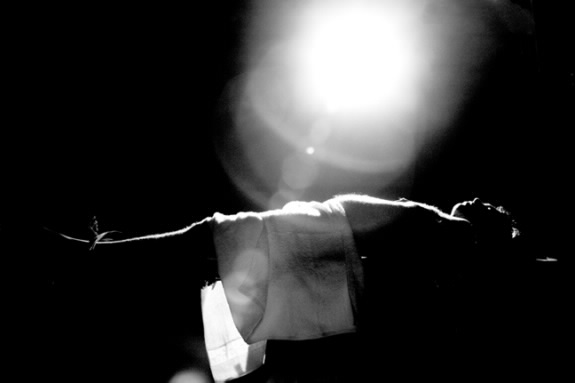
Memos released on April 16, 2009 describe in detail "enhanced interrogation techniques" used on terrorism suspects. While many American's have heard the controversy surrounding the abuse of detainees at Abu Ghraib prison, few have clear depictions of what these techniques look like.
These photographs were created on the set of Standard Operating Procedure, a film by Errol Morris that tells the story of what happened at Abu Ghraib.
These images are accurate reenactments of events that took place in the prison. They are intended to make visible the idea of torture and to provoke the observer to imagine what it is like to be tortured.
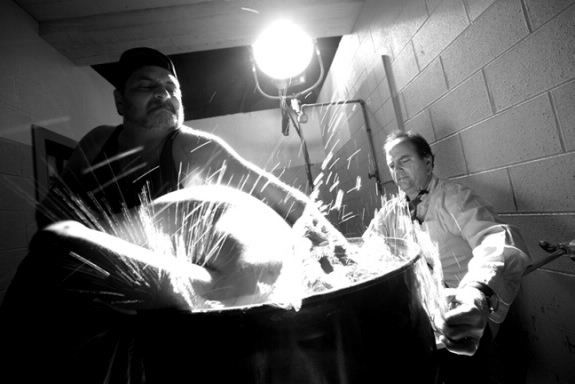
In a memo to John Rizzo, Assistant Attorney General, Jay S. Bybee, wrote "...The waterboard, which inflicts no pain or actual harm whatsoever, does not, in our view inflict "severe pain or suffering...The waterboard is simply a controlled acute episode, lacking the connotation of a protracted period of time generally given to suffering."
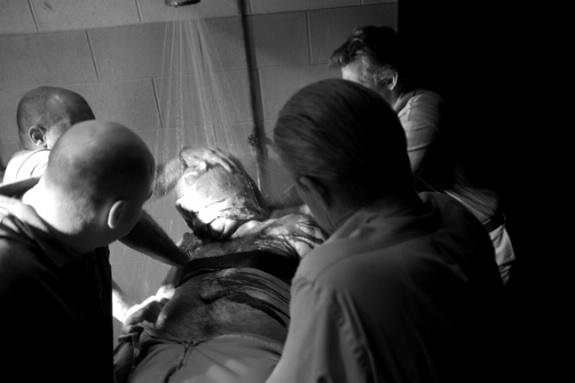
Some individuals who did not believe that waterboarding constituted torture changed their opinions after experiencing the procedure for themselves. Writer and political observer Christopher Hitchens was challenged to undergo waterboarding. After the experience Hitchen's is quoted as saying, "if waterboarding does not constitute torture, there is no such thing as torture."

Waterboarding typically refers to a procedure in which a cloth is placed over an individual's nose and mouth and water is poured over the face for a period less than a minute. The technique simulates the experience of drowning. The gurney that the individual is strapped to may be put at an incline with the head below the lungs to prevent the water from going into the lungs and actually drowning the individual.
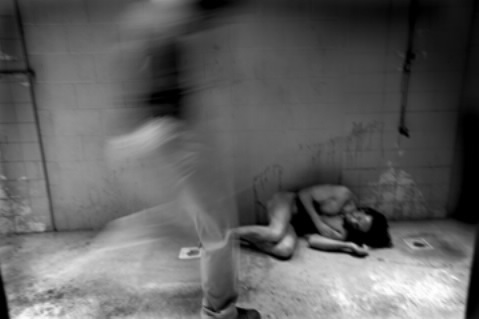
In addition to coercive techniques such as waterboarding, the Office of Legal Council prescribed the use of conditioning techniques. These were a set of ongoing conditions intended to show detainees that they had "no control over basic human needs." This included forced nudity, dietary manipulation, and sleep deprivation.

Un-muzzled dogs were used to intimidate detainees. In one case, a detainee suffered from multiple bite wounds.
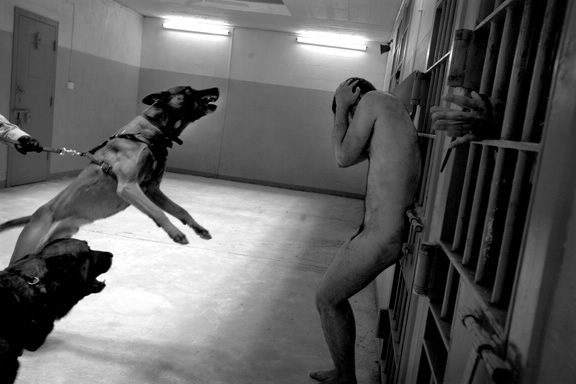
Dog handlers reportedly had a contest to see who could make the most prisoners urinate out of fear of the dogs.
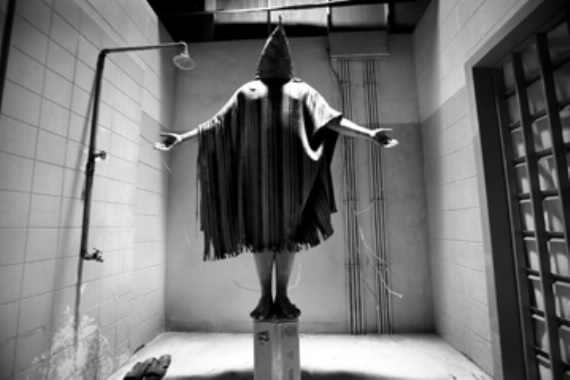
One of the infamous images documented by soldiers at Abu Ghraib shows a hooded man standing on a box. The detainee's hands were attached to wires. He was told that he if he stepped off the box he would be electrocuted.
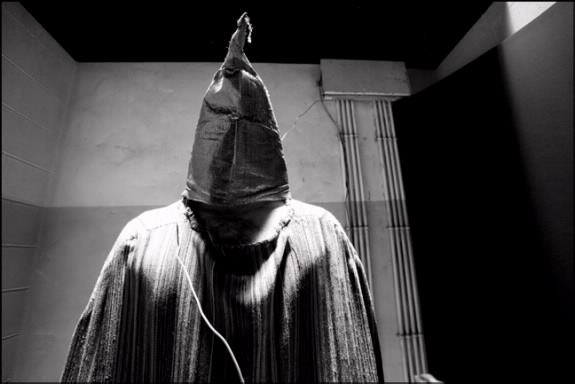
Cement bags were often used as hoods to cover detainee's faces, one of many techniques used to make them feel out of control.

Detainees were routinely shackled in uncomfortable positions and left for hours. Stress positions and sleep deprivations were used to soften the detainees for interrogation.
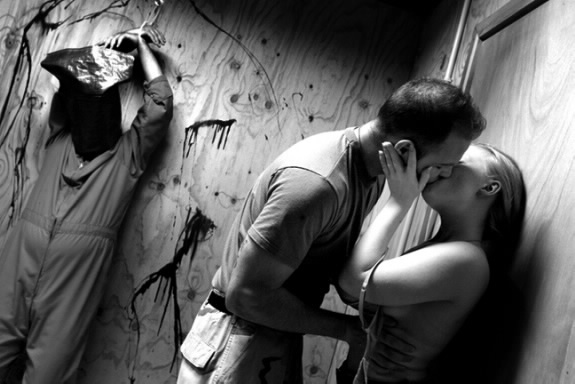
This image shows military personnel playing "grab ass" in the interrogation room with a hooded detainee. Sexual abuse and the licentious behavior of military personnel are documented in photographs taken by the soldiers themselves.

This photograph was taken from a monitor attached to a film camera positioned underneath a fifty-gallon drum with a glass bottom. It shows the face of an individual whose head is being held under water.

In describing water torture techniques used in the Philippine-American war, Lieutenant Grover Flint said, "his sufferings must be that of a man who is drowning, but cannot drown."